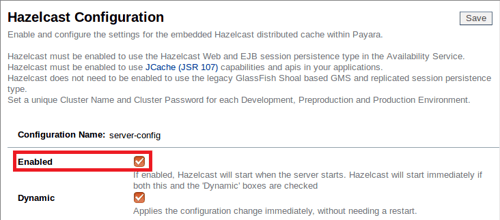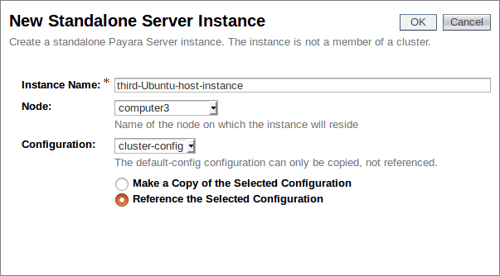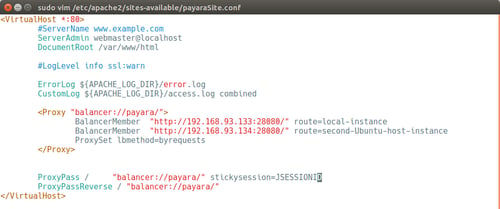Posts tagged Developer (4)
Payara Platform Project Spotlight - TechnoLynx
Published on 10 Jul 2024
by Chiara Civardi
Topics:
Developer,
Payara Community,
Jakarta EE
|
0 Comments
Innovation is at the core of some of the most exciting software applications currently available and in development. It's important to recognize these solutions, as the stories behind them can inspire developers as well demonstrate the real-world impact of a reliable and future-oriented application server in pushing boundaries in software development. In line with this commitment, we're delighted to shine a spotlight on Payara Community member, TechnoLynx, by interviewing its CEO and Founder, Balázs Keszthelyi. In this blog post, he discusses what the organization does, its applications and how it uses Payara to power key applications.
No-Code Jakarta EE & MicroProfile Cloud Hosting for Startups: Payara Cloud
Published on 18 Jun 2024
by Luqman Saeed
Topics:
DevOps,
Developer,
Kubernetes,
Payara Cloud,
Getting Started with Payara Cloud,
start-ups
|
0 Comments
Start-ups are hotbeds of innovation, where speed, agility and resourcefulness are key to success. But in the world of enterprise Java applications, managing complex cloud deployment infrastructure can quickly become a bottleneck and take up considerable time from your developers. To address these issues and streamline cloud deployments, we created Payara Cloud.
Watch Webinar Recording - Uncovering The Secrets of Java Runtime Choices for Jakarta EE Applications
Published on 17 Jun 2024
by Chiara Civardi
Topics:
Developer,
Payara Events,
Java,
getting started with Jakarta EE,
Jakarta EE
|
0 Comments
'Java' can be considered an umbrella term encompassing different technologies rather than a single element or solution. This webinar with Simon Ritter from Azul & Luqman Saeed from Payara - watch here - shed a light on what different Java aspects and components, illustrating how software developers can leverage these technologies, including runtime options, to deliver highly effective applications.
Use Hibernate as a JPA Provider within Payara
Published on 16 Jun 2022
by Priya Khaira-Hanks
Topics:
Developer,
Payara tools,
Payara Community
|
3 Comments
The Payara Platform promises aggressive compatibility. Because we focus on providing an excellent application server, we do not seek to lock you in to a product suite or any particular tools. As you see in this blog, this is also true in the case of which implementation of the Jakarta Persistence API specification you choose to use. We explain why we run automatically with EclipseLink, but also why and how you may switch to Hibernate.
Choose the tool that is right for your specific use case.
Fundamentos de Payara Server Parte 6 - Creando un cluster dinámico con conmutación por fallas en Payara Server con Hazelcast
Published on 29 May 2018
by Michael Ranaldo
Topics:
Hazelcast,
Payara Server Basics,
Clustering,
How-to,
GlassFish basics,
JVM,
Apache,
Payara Server Basics - Series,
Developer,
Spanish language
|
1 Comment
Avanzando más nuestra serie de blogs de introducción, esta entrada mostrará como puedes escalar de forma dinámica tu cluster, y como Payara Server maneja la conmutación por fallas entre miembros del cluster.
See here for the original version in English language.
La conmutación por fallas es la habilidad de continuar proporcionando acceso a nuestro sitio web o aplicación en el caso de que un servidor falle. Es una parte importante de un servicio que goza de alta disponibilidad, cuyo objetivo es minimizar los tiempos de inactividad a lo largo de tu infraestructura de servicios.
Payara Server Basics Part 7 - Creating a simple Payara Server Cluster in Windows with DCOM
Published on 08 Dec 2017
by Michael Ranaldo
Topics:
Hazelcast,
Payara Server Basics,
Clustering,
How-to,
GlassFish basics,
Scalability,
JVM,
Apache,
Payara Server Basics - Series,
Developer
|
3 Comments
Taking our introductory series onwards, this blog will look at how you set up a simple Payara Server cluster on Windows using the native remote control protocol, DCOM. We will set up two instances on Windows 10, controlled by a third Domain Administration Server (DAS) instance on Windows 7 via DCOM, and cluster them together using Hazelcast. Finally, we will deploy our trusty clusterjsp application to demonstrate how the data is being shared across our instances.
Payara Server Basics Part 6 - Dynamic Clustering and Failover on Payara Server with Hazelcast
Published on 10 Nov 2017
by Michael Ranaldo
Topics:
Hazelcast,
Payara Server Basics,
Clustering,
How-to,
GlassFish basics,
JVM,
Apache,
Payara Server Basics - Series,
Developer
|
3 Comments
Further developing our introductory blog series, this post will look at how you can dynamically scale your cluster, and how Payara Server handles failover between cluster members.
Failover is the ability to continue to provide access to your website or application in the event of a server failing. It is an important part of high availability hosting, which aims to minimise downtime across your server infrastructure.
Payara Server Basics Part 5 - Configuring Sticky Sessions for Payara Server with Apache Web Server
Published on 01 Nov 2017
by Michael Ranaldo
Topics:
Payara Server Basics,
Clustering,
How-to,
GlassFish basics,
JVM,
Apache,
Payara Server Basics - Series,
Developer
|
0 Comments
This article continues our introductory blog series on setting up a simple cluster with Payara Server, carrying straight on from our last blog where we set up load balancer on our cluster.
By clustering our Payara Servers together and balancing traffic between them with Apache Web Server we keep the benefits of having our application accessible from a single URL and gain the resilience and expansion prospects from having our application deployed across multiple instances.
Fundamentos de Payara Server Parte 5 - Configurando Sesiones Persistentes para Payara Server con Servidor Web Apache
Published on 01 Nov 2017
by Michael Ranaldo
Topics:
Payara Server Basics,
Clustering,
How-to,
GlassFish basics,
JVM,
Apache,
Payara Server Basics - Series,
Developer,
Spanish language
|
0 Comments
Este artículo continúa nuestra serie de blogs de introducción para configurar un cluster con Payara Server, continuando desde nuestro último articulo donde configuramos un balanceador de carga para nuestro cluster.
Payara Server Basics Part 4 - Load Balancing Across Payara Server Instances with Apache Web Server
Published on 20 Jul 2017
by Michael Ranaldo
Topics:
Payara Server Basics,
Clustering,
How-to,
GlassFish basics,
Scalability,
Apache,
Payara Server Basics - Series,
Developer
|
3 Comments
Continuing our introductory blog series, this blog will demonstrate how to add load balancing capability to Apache Web Server and forward to our simple Payara Server cluster.
A load balancer can redirect requests to multiple instances, primarily for the purpose of distributing incoming requests between cluster members based on pre-determined rules. This could be a simple "round-robin" algorithm, where the workload is distributed to each instance in turn, or a weighted algorithm where requests are delivered based on a pre-determined weight for each cluster member.









